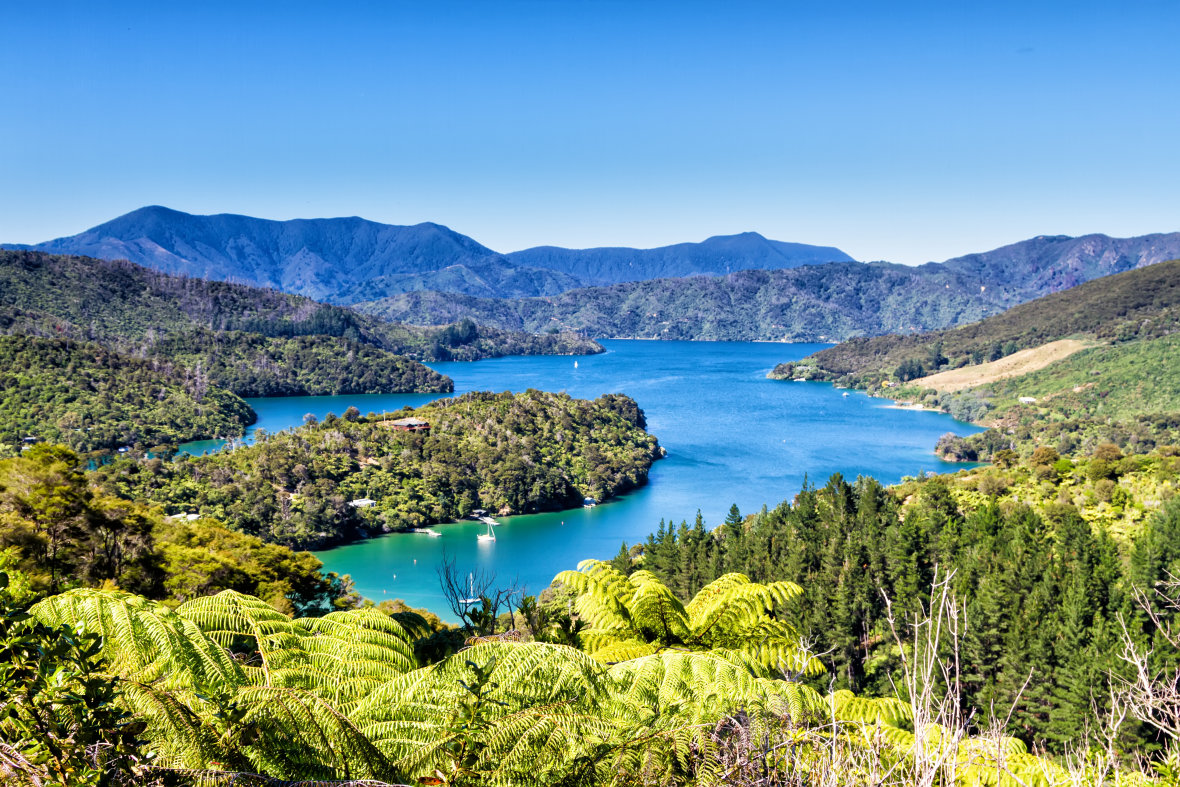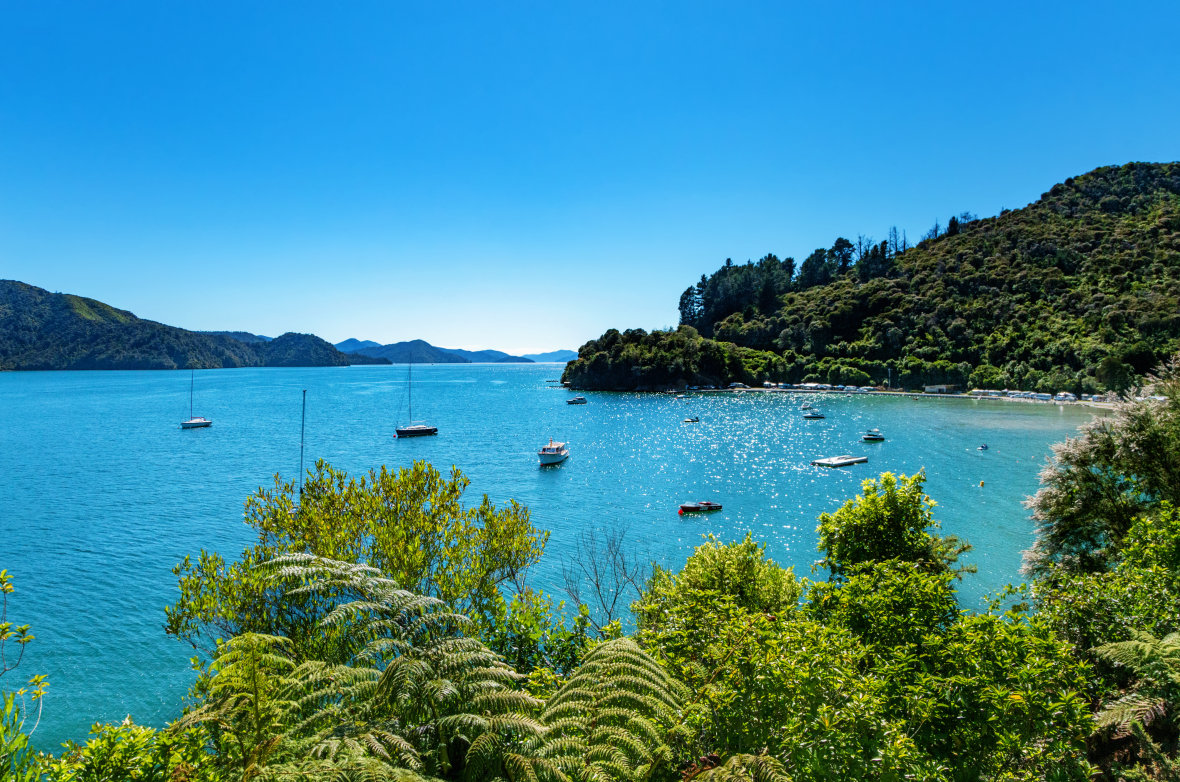


Join thousands of fellow campervan travellers
Sign up for our Britz newsletter to receive inspirational travel content and awesome deals, and we'll send you a copy of our Ultimate RV guide!
Thanks
Please confirm subscription in your email.
How long should I spend at Queen Charlotte Sound?
The ideal visit length depends on your interests, but most people find 2 to 4 days is a great start. This allows enough time to walk or bike sections of the Queen Charlotte Track, take a Queen Charlotte Sound cruise, and relax in the peaceful bays and coves.
For keen walkers or cyclists, 5–6 days can let you complete the full Queen Charlotte Track. You’ll have time to slow down, soak up the scenery, and appreciate the unique charm of each overnight stop. For those short on time, even a day trip from Picton can offer a taste of the region’s beauty.
What town is at the head of Queen Charlotte Sound?
Picton New Zealand is the main town at the head of Queen Charlotte Sound. It’s a small but lively port town with around 4,000 permanent residents, known for its waterfront charm and as the main entry point to the Marlborough Sounds. Picton has a compact centre that’s easy to explore on foot, with a range of cafes, local shops, and galleries lining the waterfront.
Beyond being a transport hub, with ferry services, water taxis, and kayak hire, Picton itself is worth a visit. You can walk along the foreshore, explore the Picton Museum, or relax in the scenic harbourfront parks. Many travellers stop here before heading into the Sounds or continue on their South Island road trip, making Picton a convenient and welcoming starting point.
How to get to Queen Charlotte Sound
Getting to Queen Charlotte Sound is straightforward and offers beautiful coastal views:
-
By road:
-
From Blenheim, about 30 minutes northwest to Picton.
-
From Nelson, around 2 hours via SH6 and the scenic Queen Charlotte Drive.
-
From Christchurch, around 4.5–5.5 hours drive north on SH1.
-
By ferry: Take the Interislander or Bluebridge ferry from Wellington to Picton. The 3.5-hour crossing is a highlight itself, passing through the Cook Strait and into the Marlborough Sounds.
Best time to visit Queen Charlotte Sound
-
Summer (December – February): Warm temperatures (20–26°C) and long days make this the best time for hiking, kayaking, and enjoying the water.
-
Spring (October – November): Mild weather, fewer people, and native plants in bloom — great for photography and birdwatching.
-
Autumn (March – April): Crisp air, vibrant foliage, and quieter trails — perfect for relaxed hikes and photography.
Early morning is best for outdoor activities like kayaking or hiking, with calm waters and soft light for photography. Late afternoon brings beautiful golden hour light, ideal for scenic boat cruises. If you’re sensitive to sun or heat, avoid midday in summer as some areas have limited shade.
Weather at Queen Charlotte Sound
Queen Charlotte Sound has a mild, temperate climate with warm, sunny summers and cool, wetter winters. Conditions can change quickly, so bring layers and a waterproof jacket, especially if you’re heading out on the water or into the hills.

Best place to park your campervan at Queen Charlotte Sound
Travellers usually base themselves in Picton before heading into Queen Charlotte Sound. The town has several camping grounds and campervan-friendly areas. Parking your campervan here and using water taxis, shuttles, or kayak tours is the most convenient way to explore the sound’s remote bays and coves.
Queen Charlotte Sound accommodation
If you’re staying overnight, consider these local camping options:
-
Tasman Holiday Parks - Picton – A well-equipped park in Picton with powered sites, modern amenities, and easy access to local shops and the marina.
-
Waikawa Bay Holiday Park – A quiet spot near the marina, great for those wanting easy access to water taxis and cruises.
-
Alexanders Holiday Park – Located a few minutes from Picton, with spacious sites and a peaceful garden setting.

